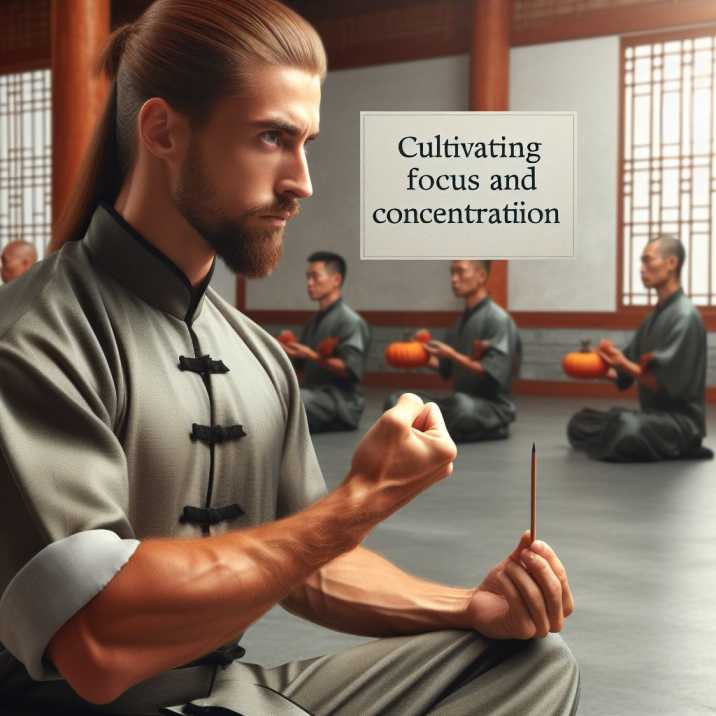Introduction:
Table of Contents
Kung Fu, often associated with awe-inspiring martial arts moves and breathtaking stunts, is not just about physical prowess; it’s also a deeply rooted practice that nurtures mental discipline. In this article, we delve into the profound ways in which Kung Fu Improves mental discipline and fortitude , offering insights into how this ancient art form shapes the mind and spirit.

Kung Fu Improves mental discipline:
The Mental Discipline Journey: From Kung Fu Dojo to Daily Life
Beyond the flashy kicks and punches, Kung Fu embodies a philosophy that extends far beyond the dojo. It’s not merely about mastering physical techniques but also kung fu improves mental discipline, which serves as the cornerstone of this martial art. As practitioners progress through their training, they embark on a transformative journey that cultivates self-control, focus, and resilience.
The Mind-Body Connection: Integrating Mental and Physical Practices
Training of Kung Fu Improves Mental Discipline and body, emphasizing the interconnectedness of physical movements with mental focus. This holistic approach fosters a deep understanding of one’s inner workings, leading to enhanced mental discipline. By synchronizing breath with movement and maintaining mindfulness during training, practitioners learn to channel their thoughts and emotions effectively.
Building Resilience Through Adversity
One of the fundamental principles of Kung Fu is overcoming challenges with grace and resilience. As practitioners encounter physical and mental obstacles during training, they develop the resilience to push through adversity. This resilience translates into everyday life, enabling individuals to navigate challenges with a calm and composed demeanor, thereby strengthening their mental discipline.
Cultivating Focus and Concentration
In the fast-paced modern world, maintaining focus and concentration has become increasingly challenging. However, Kung Fu training instills a sense of laser-sharp focus by requiring practitioners to concentrate fully on their movements and surroundings. Through repetitive practice and mindful awareness, individuals sharpen their ability to concentrate, leading to improved mental discipline both on and off the training mat.
The Role of Meditation and Mindfulness
Central to Kung Fu philosophy is the practice of meditation and mindfulness, which play a pivotal role in enhancing mental discipline. By quieting the mind and tuning into the present moment, practitioners develop a heightened sense of self-awareness and control over their thoughts. This mindfulness practice fosters mental clarity and emotional regulation, essential components of mental discipline.
The Importance of Patience and Persistence
Kung Fu is not mastered overnight; it requires years of dedicated practice and unwavering commitment. This emphasis on patience and persistence instills a valuable lesson in mental discipline. By understanding that progress is gradual and setbacks are inevitable, practitioners learn to cultivate patience and persevere through challenges, fostering a resilient mindset that is essential for success in both martial arts and life.
Table of Information: Below is a summary of how Kung improves mental discipline:
| Aspect | Description |
|---|---|
| Mind-Body Integration | Emphasizes the connection between physical movements and mental focus |
| Resilience Development | Builds resilience through overcoming challenges with grace and perseverance |
| Focus and Concentration | Cultivates laser-sharp focus and concentration through mindful practice |
| Meditation and Mindfulness | Enhances mental discipline through the practice of meditation and mindfulness |
| Patience and Persistence | Instills the values of patience and persistence, essential for long-term success in Kung Fu |
Conclusion:
In conclusion, Kung Fu training offers a multifaceted approach to Kung Fu Improves Mental Discipline, encompassing elements of physical practice, mindfulness, resilience, and patience. By integrating these principles into their training regimen, practitioners not only enhance their martial arts skills but also develop a resilient mindset that serves them well in all aspects of life.

FAQs:
- Can I use stock images for my article? Yes, you can utilize stock images as long as they are relevant and of high quality. Ensure that you have the appropriate licensing for any images used.
- Should I include captions for the images? Captions can provide additional context or information about the images, enhancing the reader’s understanding. Consider adding brief captions that complement the content of each image.
- How many images should I include in my article? Aim to include at least three to five images throughout your article to maintain reader engagement and break up text effectively.
- What dimensions should the images be? Opt for images with dimensions that are suitable for web display, typically ranging from 800 to 1200 pixels wide for optimal viewing on most devices.
- Is it important to optimize image file sizes for web performance? Yes, optimizing image file sizes can improve website loading times and overall user experience. Use image compression tools to reduce file sizes without compromising quality.


